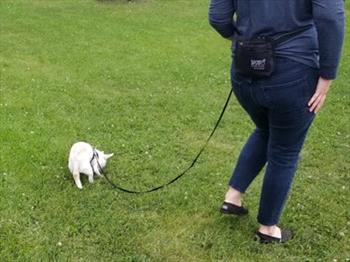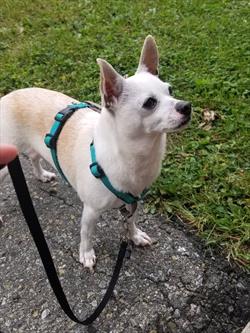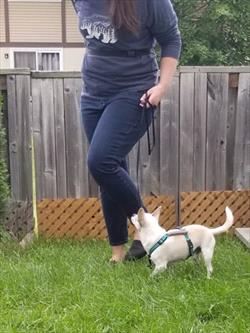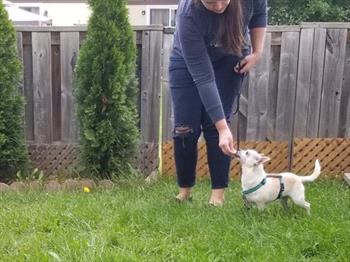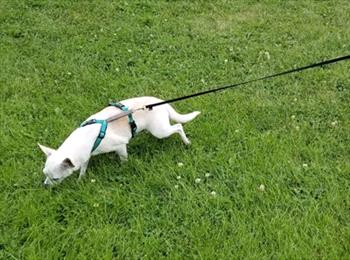
Why do dogs pull when leashed?
Leash pulling is a common complaint among dog owners. Why do they do it? The world is an exciting place full of new scents, sights, sounds, playmates, etc. Leash pulling is a self-reinforcing behavior, which means that when the dog pulls, they get to go where they want, which is not necessarily where you want to go. Since the behavior works, the dog is likely to continue doing it.
What do you want instead?
Picture what you would like your dog to do, instead of pulling. For most people, teaching their dog to walk on a loose leash is sufficient.
This involves teaching the dog that walking with a loose leash will be reinforced with forward movement. To teach this, you’ll want to first teach the behavior in an easy location, add a cue, and then start to use it in more challenging locations.
Use the right tools
No matter which tool you choose, you will still need to teach your dog how to walk beside you. It is best to think of these as safety tools rather than training tools.
While your dog is learning to walk on a loose leash, use a Y-shaped, front-attaching harness. These harnesses attach around the dog’s chest. They do not impede movement or put pressure on the neck. This harness is a great way to gently redirect the dog back to you. Use a lead that is long enough to provide some slack in the leash, usually 4-6 feet long, sturdy enough for your dog, and is comfortable for you to hold. Try tying a knot in your leash to remind you where to hold your leash to create the optimal length for your dog.
Tools to avoid
Retractable/extendable leashes
Retractable or extendable leashes are not recommended for training because your dog never has a consistent amount of length, which makes it harder for them to learn how close to stay to you. There are other issues with these leashes, such as injuries to humans and dogs (abrasions, burns, deep wounds, finger amputations, etc.) along with the leash itself breaking.
Neck collars
When attached to a leash, collars can put a lot of pressure on the neck, possibly harming the trachea, spine, thyroid, etc. Avoid putting pressure on the neck to reduce the possibility for injury or harm to these structures.
Back attaching harnesses
When pressure is applied, dogs push back into that pressure and are more likely to pull forward. If the dog pulls and gets to move forward, then the behavior has been reinforced and will be repeated. These harnesses are not recommended if you are new to training and practicing loose leash walking.
Prong, choke, shock collars
Don’t use prong, choke, or shock collars as these tools teach your dog to avoid an unpleasant or painful stimulus instead of teaching your dog the desired behavior.
Step 1: Get the behavior
For dogs who already pull on the leash, it is best to start in an easy location while trying to change the behavior. Often, the best place to start is in your living room. Leash your dog and practice offering a treat at your side every couple of steps as you walk around the room. There are several goals while doing this:
- Reward your dog for being where you want them to be. If you offer a treat at your side, your dog is more likely to walk there.
- Pulling on the leash is now a cue to return to your side. If your dog pulls, pause, and offer a treat at your side.
- Walking beside you is reinforced with forward movement. If your dog is beside you, continue to walk.
Step 2: Name the behavior
Attach a cue so that your dog knows when they should be walking close by.
- While your dog is beside you say your cue (“let’s go”, “with me”, etc.)
- Take a couple steps, then reward at your side.
- Repeat!
- As your dog gets better at this, increase the number of steps between treats.
Step 3: Take it on the road…slowly
Once your dog consistently walks on a loose leash inside your home, try the same exercise in your backyard or for a short distance outside your home. Practice for short durations, reward generously, be patient, and always be fair! For some dogs, this is the equivalent of a child doing math problems while on vacation.


